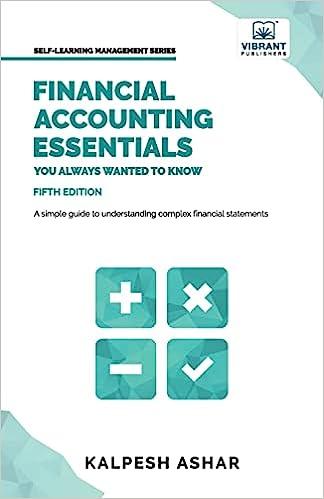Question
Regency Integrated Chips (RIC), a large Nashville-based technology company is evaluating a new project to manufacture a new chip. a. The projects estimated economic life
Regency Integrated Chips (RIC), a large Nashville-based technology company is evaluating a new project to manufacture a new chip. a. The projects estimated economic life is 5 years.
b. RICs marketing vice-president believes that annual sales would be 30,000 units if the units were priced at $6,000 each. RIC expects no growth in unit sales, and it believes that the unit price will rise by 3 percent each year.
c. The engineering department has reported that the project will require additional manufacturing space, and RIC currently has an option to purchase an existing building, at a cost of $20 million, which would meet this need. The building would be bought and paid for on December 31 of Year 0, and for depreciation purposes, it would fall into the MACRS 39- year class. The annual depreciation rate for the five years of economic life of the project would be: Year 1 Year 2 Year 3 Year 4 Year 5 1.3% 2.6% 2.6% 2.6% 2.6%
d. The necessary equipment would be purchased, installed, and paid for on December 31 of Year 0. The equipment would fall into the MACRS 5-year class, and it would cost $10 million, including transportation and installation. The annual depreciation rate for the five years of economic life of the project would be: Year 1 Year 2 Year 3 Year 4 Year 5 20% 32% 19% 12% 11%
e. At the end of the project, the building is expected to have a market value of $10 million and the equipment is expected to have a market value of $2 million.
f. The production department has estimated that variable manufacturing costs would be $4000 per unit, and that fixed overhead costs, excluding depreciation would be $20 million a year. They expect variable costs to rise by 3 percent per year, and fixed costs to rise by 2 percent per year. Depreciation expense would be determined in accordance with MACRS rates.
g. RIC must have an amount of NOWC on hand equal to 10 percent of the upcoming years sales.
h. RICs marginal tax rate is 25 percent, its cost of capital is 12 percent, and it assumes that all operating cash flows occur at the end of the year. Evaluate the project using the NPV rule and the IRR rule.

Step by Step Solution
There are 3 Steps involved in it
Step: 1

Get Instant Access to Expert-Tailored Solutions
See step-by-step solutions with expert insights and AI powered tools for academic success
Step: 2

Step: 3

Ace Your Homework with AI
Get the answers you need in no time with our AI-driven, step-by-step assistance
Get Started


